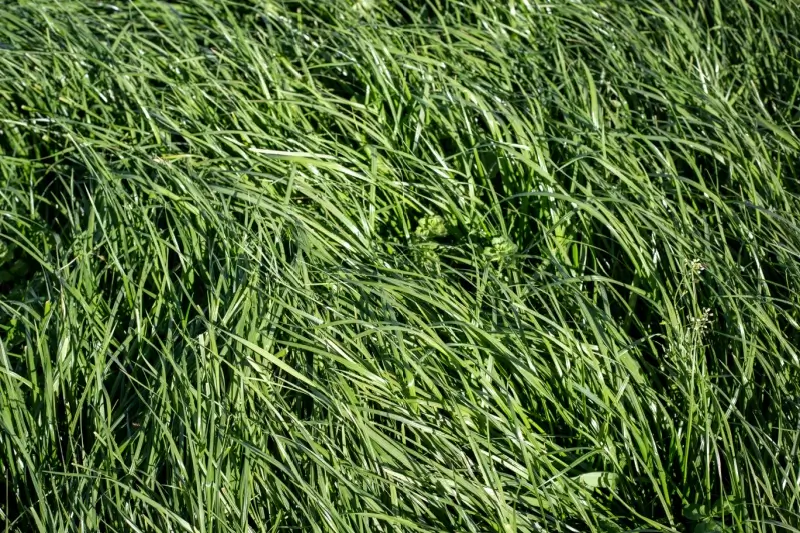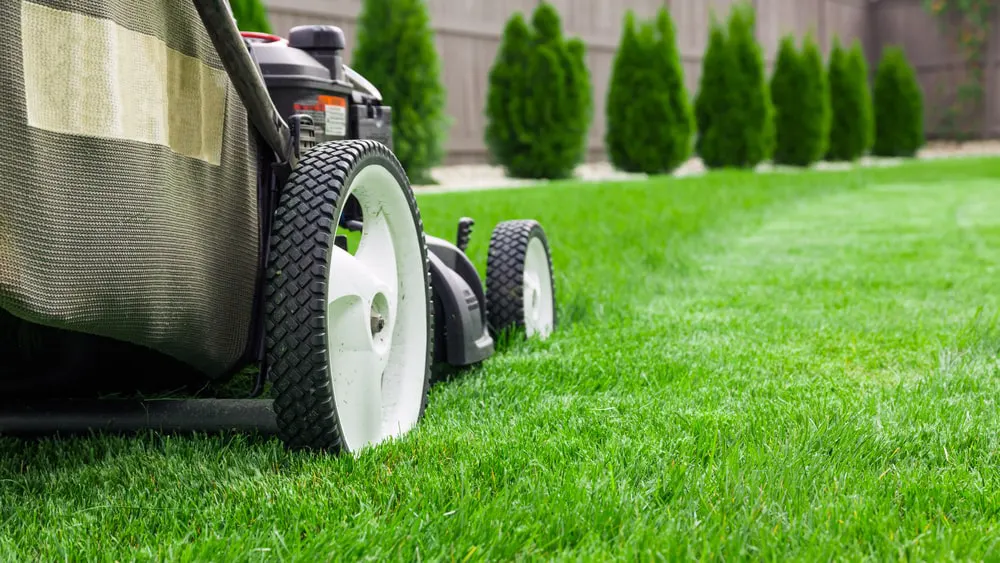The Complete Guide to Growing a Tall Fescue Lawn

If Goldilocks had grown up to be a landscaping professional, she’d probably be a huge fan of tall fescue. This popular cool-season and transition zone grass is just right in so many ways, from its moderate maintenance requirements to its ability to thrive in different soil types and its long-lasting color. If you’re looking for a new grass, it might be time to consider a tall fescue lawn.
Table of Contents:
Tall Fescue at a Glance
Tall fescue grass is a bunch-type grass with coarse blades and a medium to deep green color. Its ability to tolerate both warm and cold conditions makes it an ideal choice for homeowners in regions with colder winters. It also works in those tricky in-between regions that can see hot summers and chilly winters, which we call the transition zone.
Tall fescue is known for growing in upright clumps (which is why we call it a “bunchgrass”). It can be grown by itself or mixed with other grass seeds and tolerate moderate foot traffic, so it works well for families with kids and pets.
The Benefits of Growing a Tall Fescue Lawn

What makes tall fescue so special, and why should you consider choosing it for your lawn? In a nutshell, this grass offers a lot of benefits with very few downsides.
Can Handle a Variety of Different Soil Types
Tall fescue can survive in both acidic and alkaline soils, as well as soils with low fertility. It can handle moderate shade and even some level of salinity in the soil. That means it can take hold in many different regions and soil types across the country.
Offers Long-Lasting Color
One of the things that makes a tall fescue lawn stand out is that its color can last long into winter when other grasses turn yellow and go dormant. With careful irrigation, it can also look great during a hot summer.
Has Moderate Maintenance Needs
Certain specialized grasses require a lot of mowing, fertilization, dethatching, and aeration. While you can’t ignore your tall fescue grass all year long, its maintenance requirements are low to moderate, so you can spend less time on yard work.
Known For Strong Drought Tolerance
Tall fescue grass includes a deep root system, which makes it good at tolerating mild droughts and means you won’t have to water it as much as grass with a more shallow root system. If you live in the transition zone and face hot summers, tall fescue can handle the heat better than almost any other cool-season grass.
Planting Your Tall Fescue Grass
Sold on the benefits of a tall fescue lawn? Then, the next question becomes, how do you get one? Tall fescue does come as a sod, but it also starts well from seed. We recommend buying five pounds of tall fescue seed for every 1,000 square feet of lawn.
The best time to plant tall fescue seed is in the fall when vulnerable new shoots won’t have to fight through a sizzling summer.
When planting, remove any traces of your old lawn. Rake the soil to break it up. Spread the seeds evenly throughout your yard and then rake the seeds into the soil. If you have a seed roller, go over your area with the roller. Finally, water your seeds once a day for roughly three weeks so the roots grow deep into the soil. When your tall fescue grows to a height of about four inches, you can perform your first mow.
Maintaining Your Tall Fescue Lawn

Tall fescue is prized for its moderate maintenance requirements. To start, you’ll need to mow your grass consistently since tall fescue does tend to grow quickly. We recommend maintaining your grass at between two and four inches.
Water your lawn regularly, especially in the summer. Tall fescue is susceptible to summer dormancy if it doesn’t get enough moisture. Your watering schedule will depend on your local climate and soil type, but a good rule of thumb is to water up to one and a half inches every seven to 10 days. Water in the morning to lower water waste and your risk of fungal lawn infections.
Seasonal Care for Tall Fescue Grass
One of the main drawbacks of tall fescue is that it wears out over time. If your lawn gets a lot of foot (or paw) traffic, you’ll likely need to overseed bare or bald patches every few years or more frequently. Fertilize your tall fescue lawn at least once a year in the fall. If your grass is struggling, consider a lighter fertilization in the spring.
This type of grass doesn’t usually produce a lot of thatch, or dead plant matter that builds up between the soil and the grass blades. You won’t have to worry about dethatching tall fescue too often, but we do recommend aerating your lawn once a year. Aerating is the process of breaking up soil compaction, either through spike aeration or core aeration. At The Grounds Guys®, we only perform core aeration and think it gives better results in the long run.
Get Expert Help with Your Tall Fescue Lawn
Tall fescue can be a wonderful lawn choice if you live in a cool-season or transitional growing zone and you’re looking for a relatively low-maintenance grass that will look great most of the year. If you aren’t sure how to get started with your tall fescue grass, contact us at The Grounds Guys.
We can create a tall fescue lawn from scratch or a blended lawn that includes tall fescue. If you already have a tall fescue lawn, we’re happy to take over ongoing lawn care. We can mow, fertilize, aerate, and overseed so you can take pride in your lawn. We’ll also give you top-notch service on every visit. That’s our Neighborly Done Right Promise™ to you. Request a free estimate today.
 Click to call
Click to call


